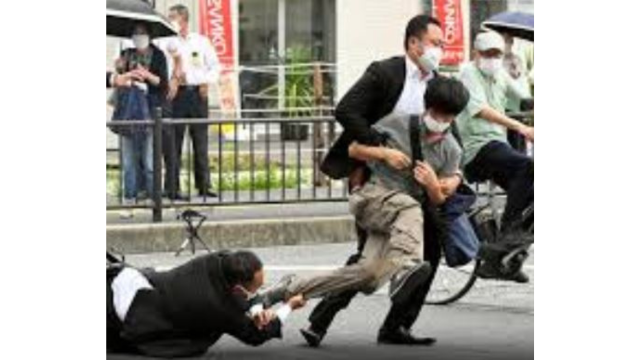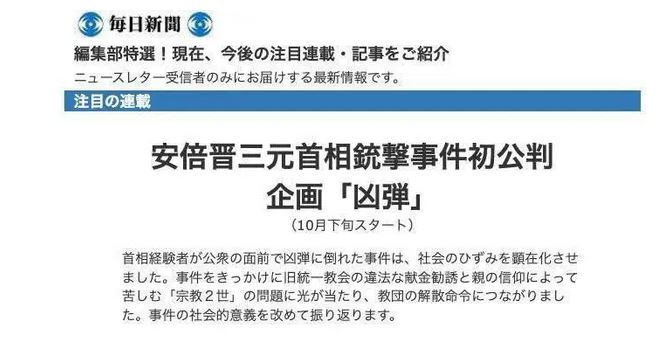by Massimo Introvigne
 Tetsuya Yamagami is arrested after the assassination of Shinzo Abe (1954–2022). Screenshot.
Tetsuya Yamagami is arrested after the assassination of Shinzo Abe (1954–2022). Screenshot.
By now, most non-Japanese readers may vaguely recall the shocking assassination of Japan’s former Prime Minister Shinzo Abe in July 2022. What they may not know is that the trial of his killer, Tetsuya Yamagami, is shaping up to be less about the murder of a statesman and more about the moral indictment of a religious minority. Welcome to the surreal courtroom theater where the defendant is recast as a tragic anti-hero, and the real target is not the man he shot, but the church he loathed.
Yamagami’s motive, or so he claimed, was not political. It was personal. He hated the Unification Church (now called the Family Federation for World Peace and Unification)—a group his mother joined decades ago. She reportedly donated excessively, leading to her bankruptcy in 2002. Note that the financial collapse happened twenty years before the assassination. Yamagami himself was never a member. But in 2022, he decided to take revenge—not on his mother or the church, but on Abe, who had been supported by the group and expressed some sympathy for it.
When such a prominent public figure is assassinated, one might expect the media to focus on the act of murder. But in Japan, the narrative took a sharp detour. Fueled by long-standing opponents of the Unification Church, the press began to frame the story as a cautionary tale about the plight of the “shukyo nisei”—second-generation members of religious movements. Yamagami, in this version, became the poster child for religious trauma. The assassin was not a criminal, but a victim.
Notorious anti-cult journalist Eight Suzuki even suggested that the murder may be one of those “cases where the victim’s conduct was found to have provoked the offense,” urging to “examine the conduct of Shinzo Abe as a politician and his relationship with the Unification Church”—as if Abe’s support for a religious group were a provocation that somehow justified a bullet.
While a series of measures were taken against the Unification Church, including a first-degree decision of dissolution (currently under appeal) last March, anti-cult lawyers launched a class action suit on behalf of these “nisei.” The result? Eight plaintiffs. Meanwhile, tens of thousands of second-generation members publicly affirmed their loyalty to the church. The disgruntled minority was just that: a minority. But in the media echo chamber, they became the voice of a generation.
Enter the “Mainichi Shimbun,” one of Japan’s major newspapers, which recently announced a new series on the Abe assassination trial. The teaser described the murder as having “social significance”—a phrase that ignited a firestorm online. Critics rightly asked: since when does gunning down a former Prime Minister qualify as socially meaningful? Is this journalism or a eulogy for terrorism?
 “Mainichi Shimbun” newsletter: “We will revisit the incident’s social significance.” From X.
“Mainichi Shimbun” newsletter: “We will revisit the incident’s social significance.” From X.
Faced with backlash, Mainichi issued a half-hearted apology for its “inappropriate expression.” But the damage was done. The newspaper’s long-standing campaign against the Unification Church—thinly veiled as investigative reporting—was now openly aligned with the defense strategy of Yamagami’s legal team, which wants to turn the trial of a murderer into a trial of a religion.
To its credit, the prosecution is trying to keep the focus on the crime. They want to exclude testimonies about the Unification Church and concentrate on the fact that Yamagami killed a public figure in broad daylight. But the defense, backed by anti-cult activists and sympathetic scholars, is pushing hard to make the church the villain.
The Unification Church is no stranger to controversy. Its theology is unconventional, its lifestyle differs from mainstream Japanese society’s, and its morals and politics are more conservative than those of “Mainichi Shimbun.” But none of that justifies murder. And none of it explains why a man who committed a premeditated assassination is being recast as a tragic product of religious dysfunction.
This is not just a Japanese story. It’s a cautionary tale for all democracies. When media outlets abandon neutrality and adopt the grievances of activists, when courts are pressured to litigate ideology instead of law, and when murderers are rebranded as martyrs, we risk turning justice into baroque theater.
The Mainichi Shimbun may have apologized for its wording, but don’t expect its campaign to stop. The paper has invested years in attacking the Unification Church. Now, with the trial of Yamagami, it has found its perfect stage. The roles are reversed: the killer becomes the victim, and the church becomes the accused.
In the end, this trial will not just decide Yamagami’s fate. It will test whether Japan’s legal system can resist the seductions of narrative and uphold the principle that justice is not a popularity contest. In the age of media activism, even murder can be rebranded—if the story is compelling enough.